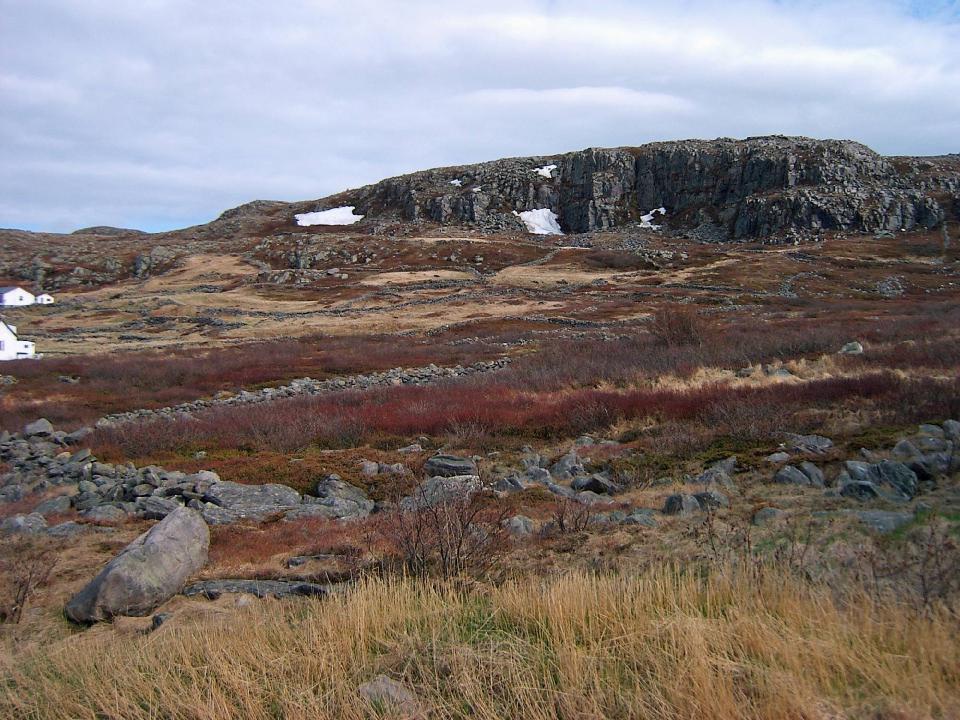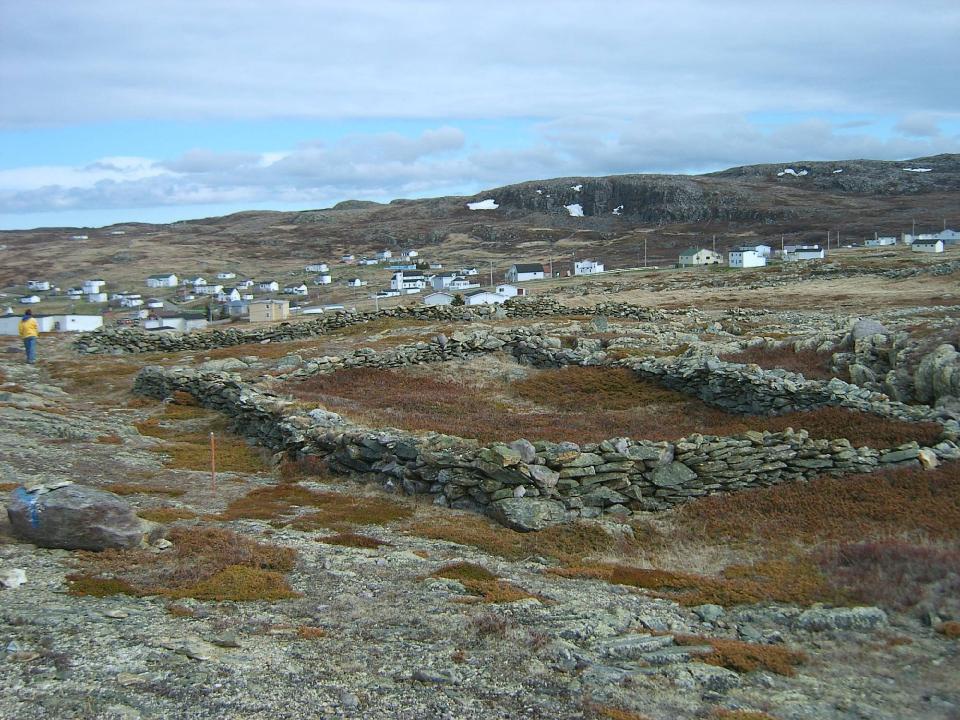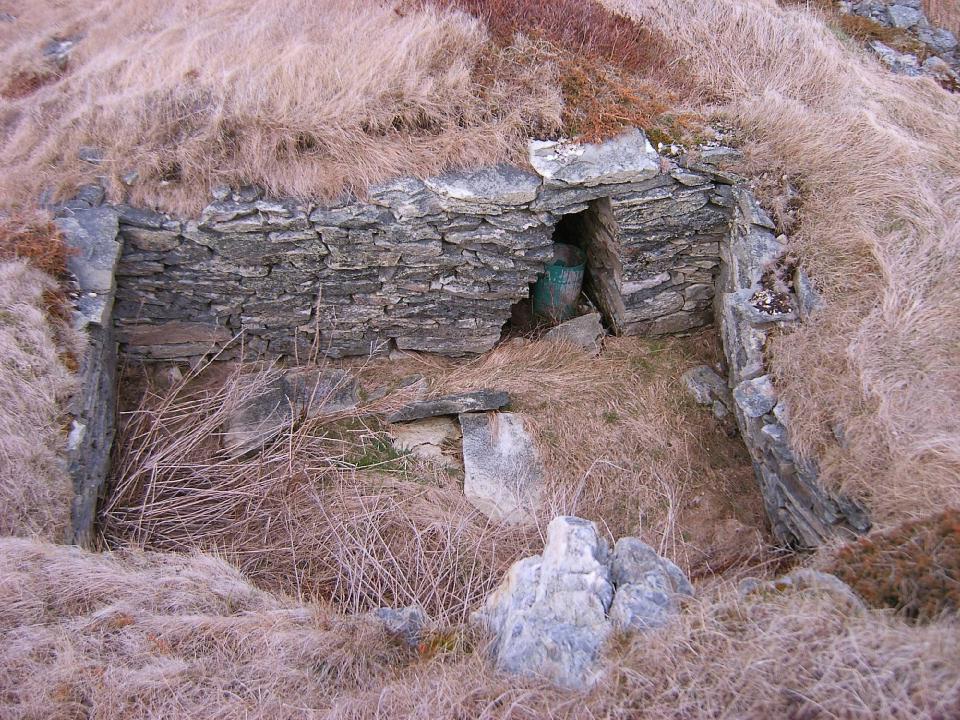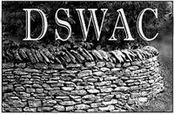
The walled landscape of Grates Cove, Newfoundland, a National Heritage Site.

From the late 1700s to the early 1900s residents of Grates Cove and many othe fishing outports—mostly of Irish and English descent—built stone walls. At Grates Cove, the walled landscape covers 65 hectares of thrown, stacked, and/or piled stone walls built to protect scarce topsoil and crops from domestic animals and provide a shelter and a warmer crop growing environment. In addition, they built root-cellars of interior stone walls and exterior turf which provided an ideal temperature for winter storage of vegetables. There is a misconception that the walls were built because of a lack of trees for post & rail fencing. Although the relatively barren landscape of Grates Cove gives that impression, there was and still is no shortage of trees in the district for rough lumber and firewood. Since little value was placed on formal land ownership, the walls served as a permanent boundary for successive generations of a family to retain ownership of the land by custom, and worked it along with their fishery. The stone walls were a prized possession and often given affectionate names such as "Moonlight Garden" or "Grandma Warren's Chair."
The walled landscape of Grates Cove is the largest and best preserved in Newfoundland and was designated a National Historic Site in 1997.

Root-cellar at Grates Cove, Newfoundland.
This simple dry stone storage place provided enough vegetables for one family throughout the winter.
Thanks to Alexander Robertson for providing us with this information.
